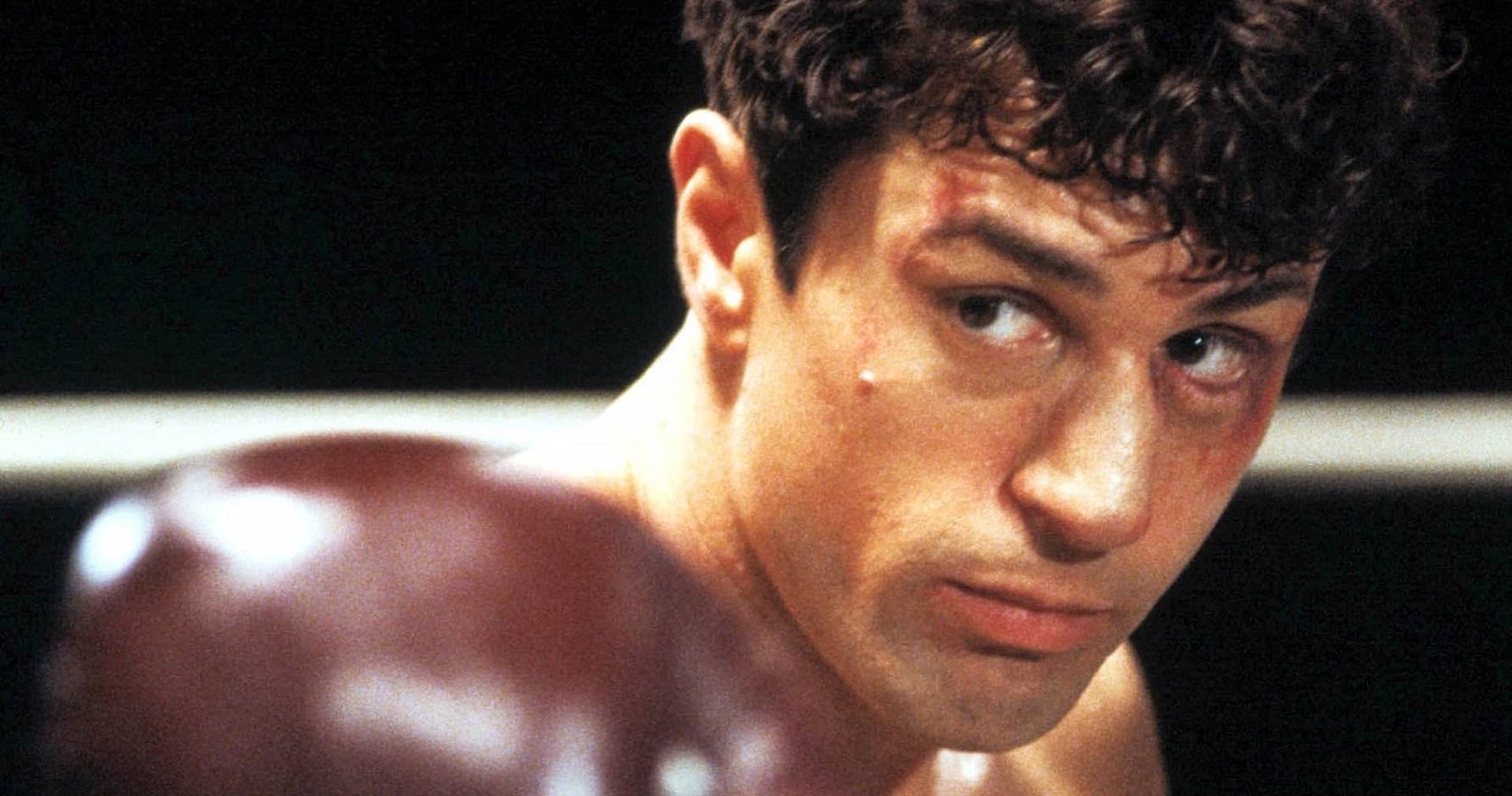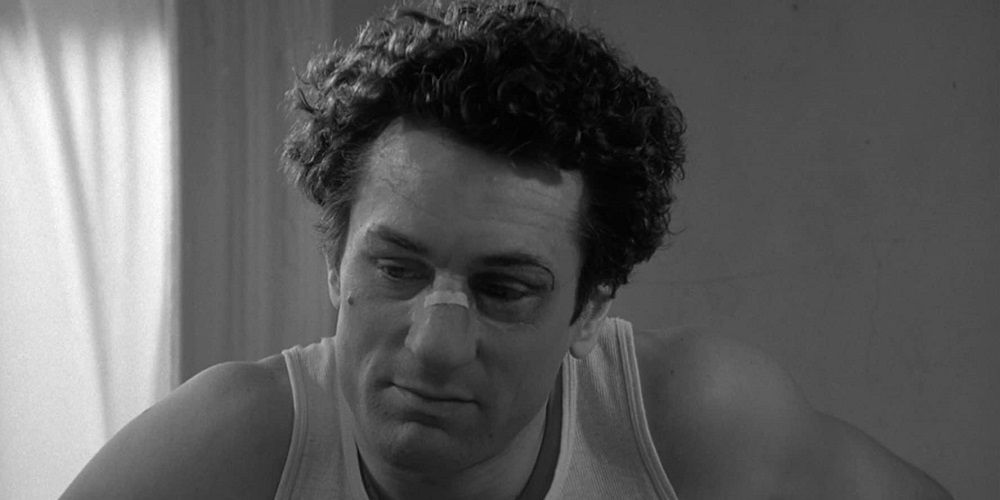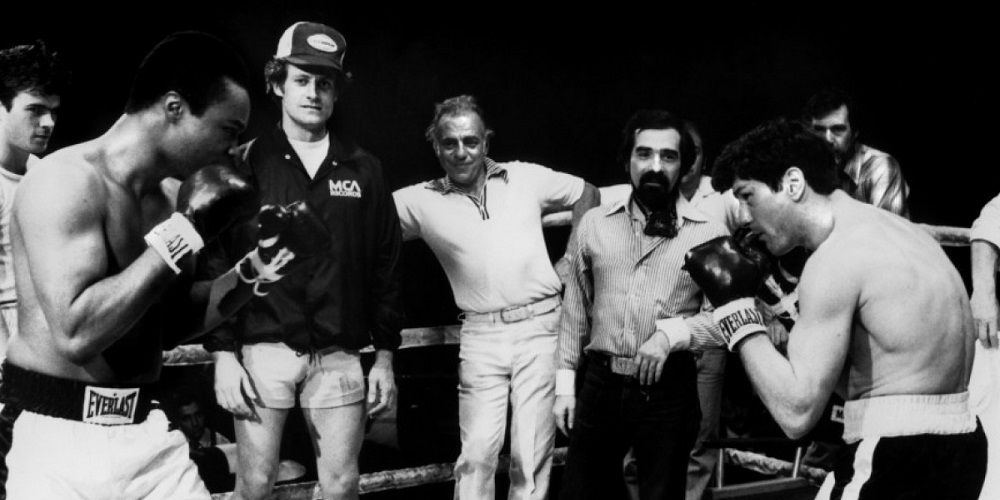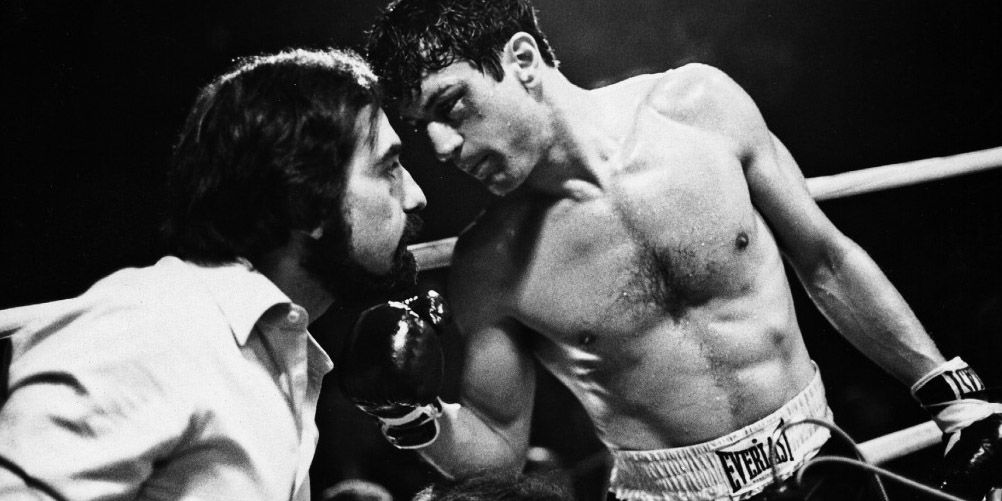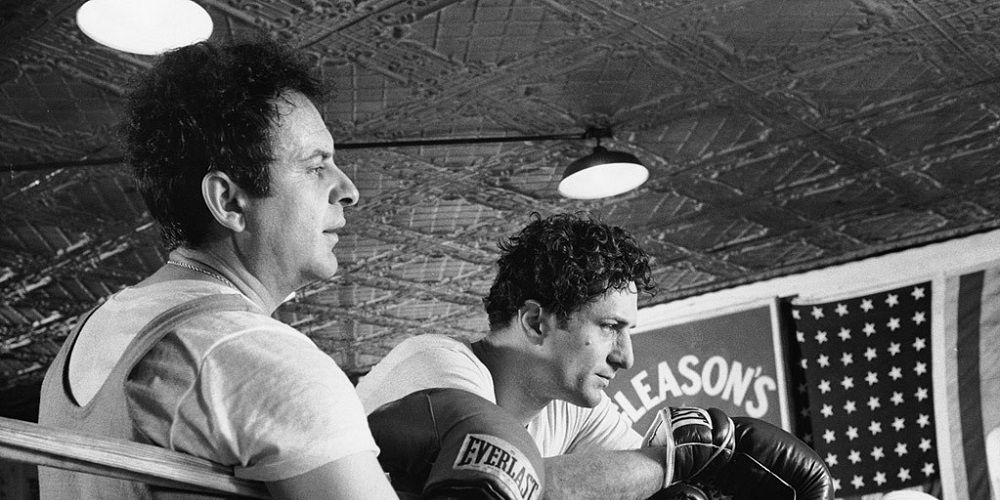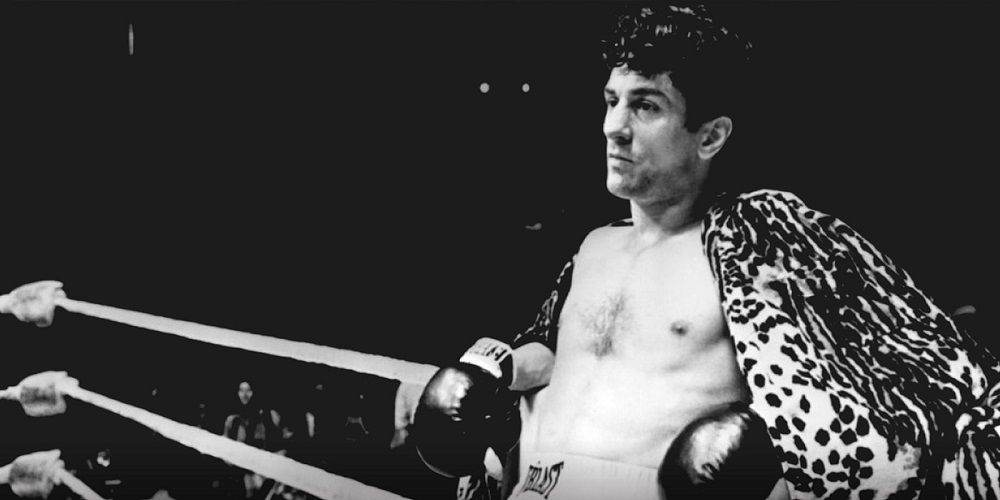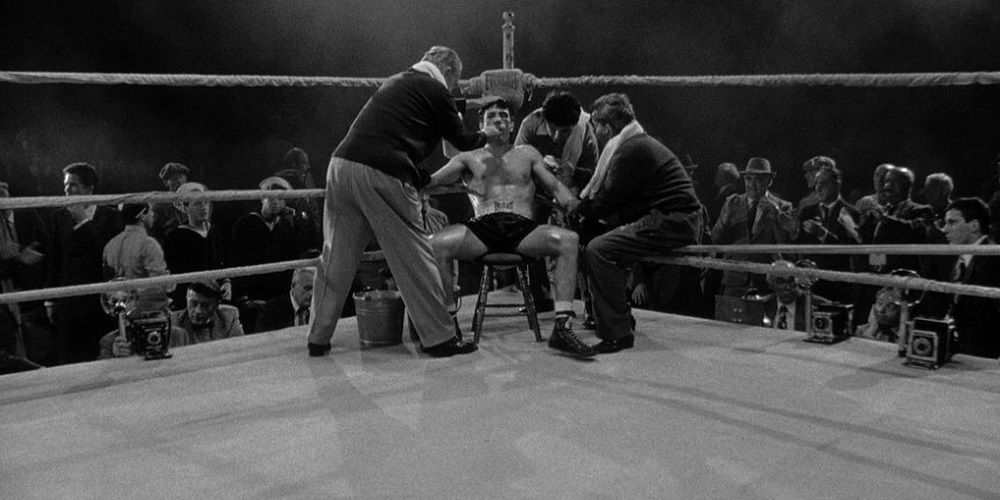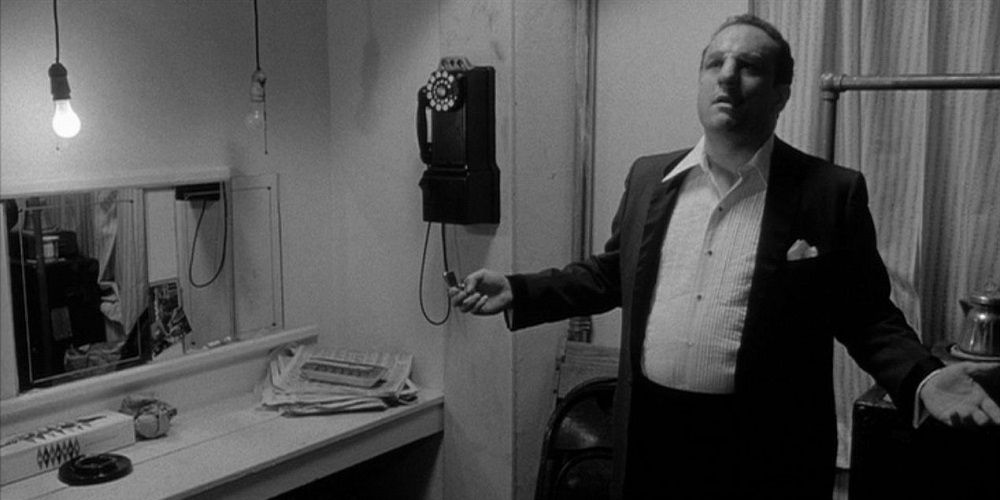Martin Scorsese's Raging Bull is widely hailed as the greatest boxing movie ever made. Starring Robert De Niro in an Academy Award-winning performance, the film chronicles the triumphant rise and tragic fall of real-life pugilist Jake La Motta, whose brutal bouts outside the ring proved just as devastating as the ones inside of it.
Raging Bull currently boasts a 93% Rotten Tomatoes rating, 89/100 Metascore, and with an 8.2/10 rating, ranks #146 on IMDB's Top 250 Movies of All Time. As the film celebrates its 40th anniversary this coming December, here are 10 behind-the-scenes facts about Raging Bull!
Conception
While making The Godfather Part II in 1974, Robert De Niro obtained a copy of boxer Jake La Motta's autobiography. Taking an immediate interest, De Niro gave the book to his friend Martin Scorsese as a possible future collaboration, who refused to make the movie at first.
In 1978, Scorsese nearly lost his life due to a cocaine overdose. De Niro visited him in the hospital and told him he needed to sober up and make this one boxing movie. Scorsese again refused, citing his disinterest in sports as a longtime asthmatic. De Niro persisted until Scorsese finally agreed.
Paul Schrader's Involvement
While Mardik Martin turned in the first screenplay for Raging Bull, it wasn't until Paul Schrader became involved that the movie really took shape. Schrader not only tweaked the structure to a nonlinear form, but he also introduced Jake's brother Joey La Motta into the fight game.
When De Niro called up Schrader asking for help with the scrip, Schrader drove to Key West and scoured the local news archives. When he discovered the existence of Joey LaMotta (Joe Pesci), who had been entirely absent from Jake's autobiography, Schrader knew he was onto something good.
Black And White
The primary reason Scorsese chose to shoot the film in black and white was to distinguish itself from Rocky, the Best Picture Winner of 1977, and arguably the heavyweight champion of all boxing movies. But there's more to the story.
While testing some 8mm footage of De Niro sparring in the ring, Scorsese noticed something slightly amiss with the images. Scorsese's longtime friend and mentor, Michael Powell, suggested the color of De Niro's gloves weren't quite right. When Scorsese agreed, he decided to shoot the film in black and white instead.
De Niro's Preparation
For his role as Jake La Motta, Robert De Niro underwent a grueling physical transformation. The scenes depicting La Motta as a young man, including every boxing match, were filmed first. De Niro sparred in the ring with the real Jake La Motta in roughly 1,000 rounds and entered three Brooklyn boxing matches, winning two of them.
Production was then shut down for several months so De Niro could gain weight for the older version of La Motta. A record at the time, De Niro put on 60 pounds by eating pasta and drinking milkshakes every day.
Pesci's Rib
During the infamous "hit me" scene, De Niro and Pesci really hit each other onscreen. The two men also lived together for several months prior to filming in order to establish a brotherly bond.
The two method actors got a little carried away in one scene, resulting in De Niro cracking one of Pesci's ribs during a sparring session. The shot made it into the final cut of the film, replete with Pesci's audible groan as he's punched in the side. The angle cuts rapidly after he sustains the blow.
Alternate Directors
In at least two instances in Raging Bull, someone other than Martin Scorsese directed from behind the camera. The first alternate was the filmmaker's father, and the other was a crew of teamsters.
When Scorsese fell ill during production and couldn't make it to the set, he asked his father Charles to direct the rooftop wedding sequence. For the colorized 16mm home-movie montage, Scorsese was having trouble achieving an amateur look. As a result, he gave the camera over to a crew of teamsters to capture the feeling of a home-video. Scorsese personally scratched the negative to make the footage appear more authentic.
Psycho Shot List
When Scorsese had difficulty deciding how to edit the final fight scene between La Motta and Sugar Ray Robinson, he turned to an older master for inspiration.
Scorsese studied the original shot list for the iconic shower scene in Alfred Hitchcock's Psycho in order to choreograph the editing rhythm of the fight sequence. Scorsese later commented the was method was extremely helpful, allowing him to achieve what he deemed was the most horrific scene in the film.
Sound/Visual Effects
Many novel methods were used to achieve the iconic boxing matches in Raging Bull. Visually, a much larger boxing ring was used in spots to make La Motta appear much smaller and more helpless than he normally would. Also, Hershey Chocolate sauce was used to depict blood, which looks more convincing on black and white film than fake blood.
The punching sound effects in the film were achieved by smashing melons and tomatoes. Gunshots were used for the flash-bulb photography sound effects. To avoid duplication, the original sound FX tape was destroyed by the sound technician.
Boxing Scenes
Although the boxing scenes account for roughly 10 minutes of screen time, they took roughly 10 weeks to film. Meticulous planning went into the fight scenes, including shooting from inside the ring rather than outside the ropes.
The fight scenes were filmed at a normal 24 frames per second by DP Michael Chapman. But for the scenes of La Motta in his corner between rounds, Chapman over-cranked the camera to 48 frames per second then reversed the process as La Motta emerges from the corner, doing so all in one shot. For the shot of La Motta being soaked with water in the corner, the frame-rate was increased to 96-120 frames per second.
On The Waterfront Speech
Raging Bull concludes with Jake La Motta reciting the infamous Terry Malloy monologue from On The Waterfront. But according to Scorsese, no thematic parallel should be drawn between the two films, as another monologue was planned to be used altogether.
Originally, La Motta was going to recite a speech from Shakespeare's Richard III. Michael Powell, fellow director and husband of Scorsese's longtime editor Thelma Schoonmaker, suggested the monologue ought to be from an iconic American source rather than a British one.

